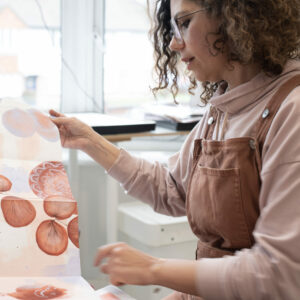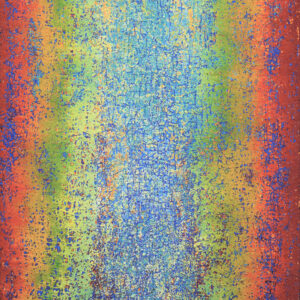Artist Tips
A Crash Course on Using Social Media for Artists
Social media can be a strange beast. Navigating its intricacies takes a bit of knowledge about how each platform works, and how to find the best approach. There are a few tricks of the trade that we find work best for artists building their brand and audience online. Whether you’re new to social media or looking for some best practices, we’ve got our guide to social media simply outlined below. Let’s get started.
Find Your Voice
All social mediums—especially Instagram and Facebook—thrive on personality based content, allowing users to adapt their real life selves online. Instagram in particular is highly visual, which is a huge asset for artists. Posting studio and behind the scenes (#BTS) shots offers a glimpse into your daily process, humanizing your work. Prominent art thinker and critic John Berger preached the notion that the true value of art is inextricably tied to the activity of the artist, the moments where an idea is shaped into physical object. In other words, show us your studio!
Posting high quality photos of your workspace allows viewers to trace the evolution of a work from start to finish, and presents it in a new light. Collectors will relish the opportunity to learn and see more about your process, establishing a connection with a work early on in its creation.
Instagram supports videos up to a minute long, which you can upload directly from your phone library. If you have an iPhone, utilize the camera’s built in time-lapse feature to better illustrate detail of a work in action. You can also use free apps like Hyperlapse to better optimize your time-lapse video for Instagram. For more “off the cuff” content, use Instagram Stories (accessed through the small camera icon in the top left of your feed) to show quick photos or videos of you working, or just living your life. These stories are highly visible at the top of your followers’ feed, and disappear after 24 hours- so perfection is not a concern.
While the priority on platforms like Instagram, Facebook, and Pinterest should be on the image, caption is also key. Let your voice shine through, allowing users to connect with your quirks and sense of humor. Captions are also important for visibility, and inclusion of certain key words can make a world of difference in establishing discoverability. On Instagram and Twitter, use relevant hashtags that are discoverable but not too overcrowded, like #studioshot or #studiowall. Pinterest users utilize the search bar like they would a search engine, so use granular descriptions of your work (think: “blue expressionist painting”). Always, when possible, point to a link where users can either purchase, or see more of your work (your portfolio on Saatchi Art, perhaps). On Instagram, place this link in your bio and indicate so in each post’s caption.
Build Your Audience
Be engaging! Follow other artist’s accounts, and find community. Think about who your target audience is, and where they might be. What other interests do they have? Which other accounts do they follow? Do some digging and searching through hashtags, and geotagged posts from galleries and museums. Follow users and like their posts, but don’t overwhelm with overeager levels – think gentle nudge vs. firing on all cylinders. Be an active user, not an eager user, we always say.
Be Consistent
Because platforms and algorithms are constantly changing and evolving, it’s important to foster quality engagement with real people/accounts. When Instagram made the switch from chronological to algorithmic feed, accounts and brands that you are most engaged with began to filter higher in a user’s feed. Instagram’s transition echoes essentially every other medium with algorithmic feed, including Twitter and Facebook. This means you’ll have to work harder to capture the interest of your followers, and to keep it. Maintain a consistent posting schedule, a few times throughout the week and definitely don’t bombard or clog a feed with too many posts.
A couple of #paintings drying in the warm SoCal sun! #clairedesjardins #abstractart #artwork #originalart #art #painting #artinprogress pic.twitter.com/PGav8W52kK
— Claire Desjardins (@clairedj) March 11, 2017
Need a nitty grittier breakdown of social media? Check out this guide, which walks you through setting up accounts and posting 101.
Want more tips for success delivered straight to your inbox? Sign up for the Artist Newsletter.














